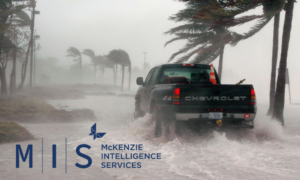COVID-19’s impact on the insurance industry will continue well into 2021, and insurers will need to equip themselves with insights and information that can help build trust with consumers and businesses while also allowing them to remain competitive in today’s evolving marketplace. Following are four trends that will likely influence the insurance industry this year and beyond:
Consumers and businesses will continue to be impacted by the financial and economic challenges due to COVID-19, which could lead to profitability impacts for insurers. In an effort to provide relief and in response to fewer miles being driven, the Insurance Information Institute estimates U.S. auto insurance carriers will return $14 billion to customers. Despite these efforts, consumers and businesses continue to experience varying financial and economic challenges (e.g., rising unemployment, changes in household spending, etc.).
To help insurers better understand COVID-19’s impacts, TransUnion recently conducted a survey of 3,148 U.S. consumers with active auto, homeowners, renters and/or life insurance policies. When asked to consider future bills/payments, the survey found that in the next three months, consumers are mostly concerned about being able to pay for their auto insurance bill (44%), their car payment (26%), their mortgage payment (23%) and their life insurance bill (22%).
Insurers will need to be able to identify which customers are experiencing financial hardship to best meet their needs.
- In light of COVID-19 challenges, consumers and businesses shifted their behaviors and preferences, and they will likely expect insurers to understand these individualized needs. Many consumers and businesses’ needs and behaviors changed as a result of COVID-19 challenges alongside stay-at-home guidelines and social distancing measures. According to TransUnion’s survey, of the respondents who own or lease a car (90%), 72% said they use their vehicles less or not at all in the time since COVID-19 was named a pandemic. This trend could lead to more consumer interest in usage-based insurance and telematics. Sixty-one percent of respondents would let their insurer collect real-time information about their mileage and driving habits if it could lower their premium.
When asked about work environments in 2021, 37% of respondents cited a preference for work at home while 31% preferred a hybrid of in-person and working from home, which could indicate broader shifts within the commercial and personal real estate spaces in the year ahead.
Digitization accelerated across the insurance policy lifecycle in response to the COVID-19 pandemic. TransUnion’s survey revealed 47% of respondents filed an auto and/or property claim in the last year, and of those respondents, 39% used a mobile app, website portal or e-mail. Consumer preferences also lean towards digital/online platforms, with respondents preferring to communicate with an insurance provider primarily via e-mail (32%), telephone calls (32%) and an insurer mobile app/website portal (18%).
With these findings in mind, insurers will likely need to balance expanding digital interactions and offerings with reducing customer friction and protecting against fraud.
- The number and severity of disaster-related claims will increase due to extreme weather events. The U.S. experienced record-breaking numbers of natural catastrophes in 2020. What’s more, TransUnion’s consumer survey indicates 21% of respondents were impacted by natural disasters in 2020.
The industry will likely continue to see this demonstrable increase in the frequency and severity of natural-disaster related claims. Insurers should strongly consider continuously assess risk and implement proactive strategies to address operational challenges and manage risk for businesses and consumers.
Reflecting on the past year, COVID-19 pushed the need for nascent, innovative digital solutions and services to the forefront of standard insurance industry operation. The unpredictable environment that lies ahead indicates consumers and businesses will increasingly rely on and choose insurers offering online resources and tools that can best meet their needs, particularly as digital adoption continues to grow.
As insurers consider strategies and solutions in the new year, it will be important to understand the outsized impact of these trends and COVID-19 challenges when approaching and interacting with customers in 2021 and beyond.
Source: Digital Insurance
Share this article:








